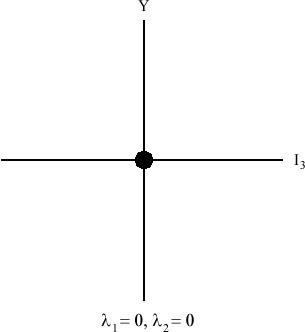 | ||
In particle physics, the hypercharge (from hyperonic + charge) Y of a particle is related to the strong interaction, and is distinct from the similarly named weak hypercharge, which has an analogous role in the electroweak interaction. The concept of hypercharge combines and unifies isospin and flavour into a single charge operator.
Contents
Definition
Hypercharge in particle physics is a quantum number relating the strong interactions of the SU(3) model. Isospin is defined in the SU(2) model while the SU(3) model defines hypercharge.
SU(3) weight diagrams (see below) are 2-dimensional with the coordinates referring to two quantum numbers, Iz, which is the z-component of isospin and Y, which is the hypercharge (the sum of strangeness (S), charm (C), bottomness (B′), topness (T), and baryon number (B)). Mathematically, hypercharge is
and conservation of hypercharge implies a conservation of flavour. Strong interactions conserve hypercharge, but weak interactions do not.
Relation with electric charge and isospin
The Gell-Mann–Nishijima formula relates isospin and electric charge
where I3 is the third component of isospin and Q is the particle's charge.
Isospin creates multiplets of particles whose average charge is related to the hypercharge by:
since the hypercharge is the same for all members of a multiplet, and the average of the I3 values is 0.
SU(3) model in relation to hypercharge
The SU(2) model has multiplets characterized by a quantum number J, which is the total angular momentum. Each multiplet consists of 2J + 1 substates with equally spaced values of Jz, forming a symmetric arrangement seen in atomic spectra and isospin. This formalizes the observation that certain strong baryon decays were not observed, leading to the prediction of the mass, strangeness and charge of the
Ω−
baryon.
The SU(3) has supermultiplets containing SU(2) multiplets. SU(3) now needs 2 numbers to specify all its sub-states which are denoted by λ1 and λ2.
(λ1 + 1) specifies the number of points in the topmost side of the hexagon while (λ2 + 1) specifies the number of points on the bottom side.
Examples
Practical obsolescence
Hypercharge was a concept developed in the 1960s, to organize groups of particles in the "particle zoo" and to develop ad hoc conservation laws based on their observed transformations. With the advent of the quark model, it is now obvious that (if one only includes the up, down and strange quarks out of the total 6 quarks in the Standard Model), hypercharge Y is the following combination of the numbers of up (nu), down (nd), strange quarks (ns), charm quarks (nc), top quarks (nt) and bottom quarks (nb):
In modern descriptions of hadron interaction, it has become more obvious to draw Feynman diagrams that trace through individual quarks composing the interacting baryons and mesons, rather than counting hypercharge quantum numbers. Weak hypercharge, however, remains of practical use in various theories of the electroweak interaction.
